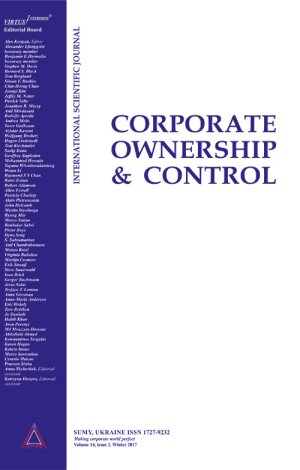
-
 Journal menu
Journal menu

- General information
- Editorial Board and External Reviewers
- Journal Policies
- Publication Ethics and Malpractice Statement
- Instructions for authors
- Paper reviewing
- Article processing charge
- Feedback from stakeholders
- Journal’s Open Access statement
- Order hard copies of the journal
- 50 most cited papers in the journal
REGULATION, CORPORATE CONTROL AND BANK RISK TAKING
Download This ArticleSeok Weon Lee
Abstract
In this study, we examine the relation between ownership structure and risk-taking behavior of banks by analyzing data for three different regulatory and economic regimes of the Korean banking industry. We find that stockholder-controlled banks exhibit higher but unprofitable risk-taking than managerially-controlled banks during the period of deregulation 1994-1995, and that this relation is more transparent during the period of deregulation and decline of the industry 1996-1997. However, higher risk-taking incentives of stockholder-controlled banks become weaker during the period of tightened regulation and structural reform 1999-2000. Furthermore, the profitability of stockholder-controlled banks given a unit increase in the bank’s risk appears to be improved in this period relative to the periods of deregulation. Considering that the economic conditions of the Korean banking industry in this period is under recovery stage (not prosperity), these results may suggest that stockholder controlled banks try to change their risk-taking behavior toward a more deliberate and profitable one, and therefore, may provide somewhat convincing evidence for the corporate control hypothesis stating that insider ownership during periods of regulatory stringency would give banks the incentives to pursue modest, deliberate and profitable risk-taking strategies. In the test for the partitioned sample, we find stronger evidences that are an integral part of this paper.
Keywords: Corporate Control, Ownership Structures, Banking, Transparency
How to cite this paper: Lee, S. W. (2004).Regulation, corporate control and bank risk taking. Corporate Ownership & Control, 1(4), 108-117. https://doi.org/10.22495/cocv1i4p9

















